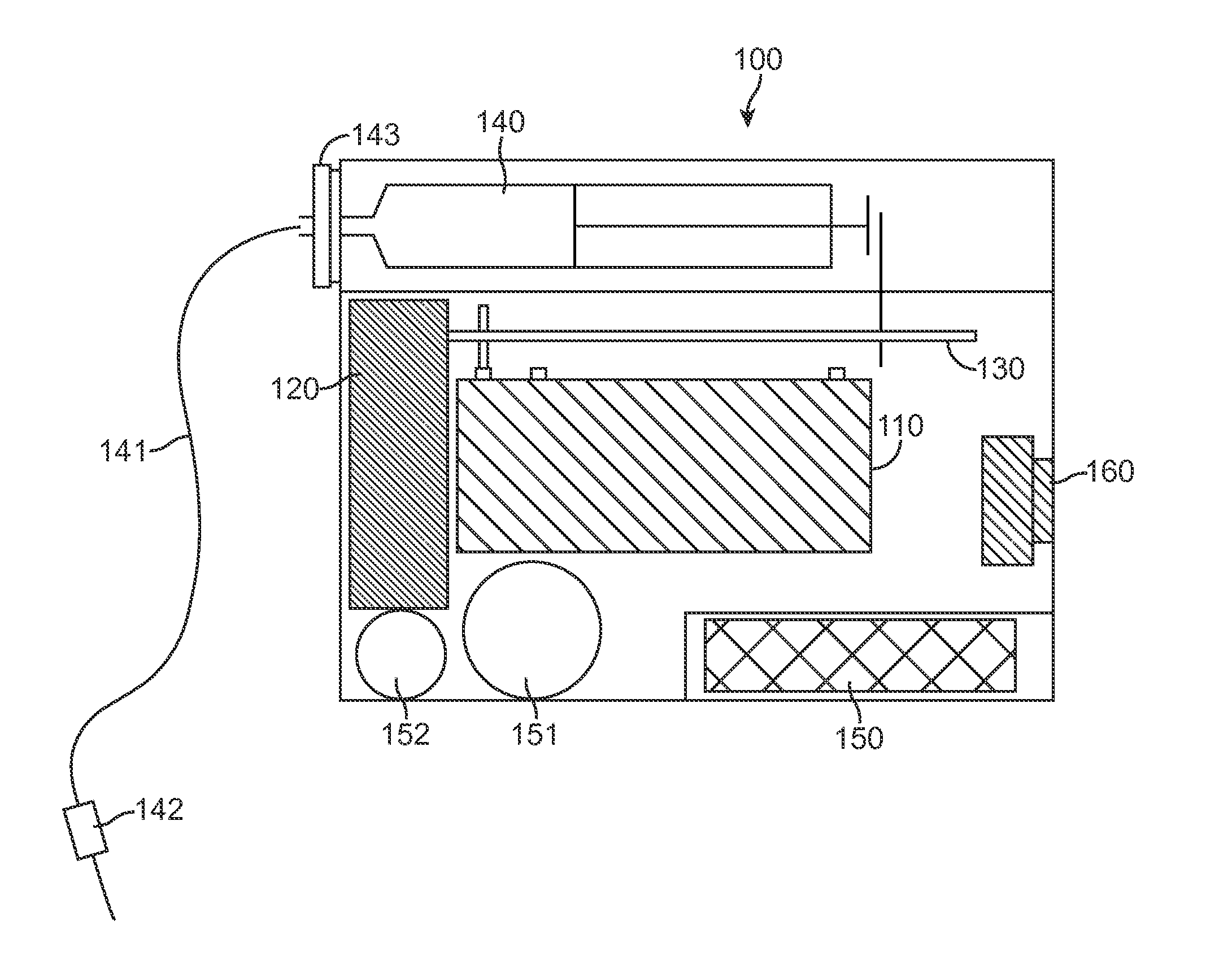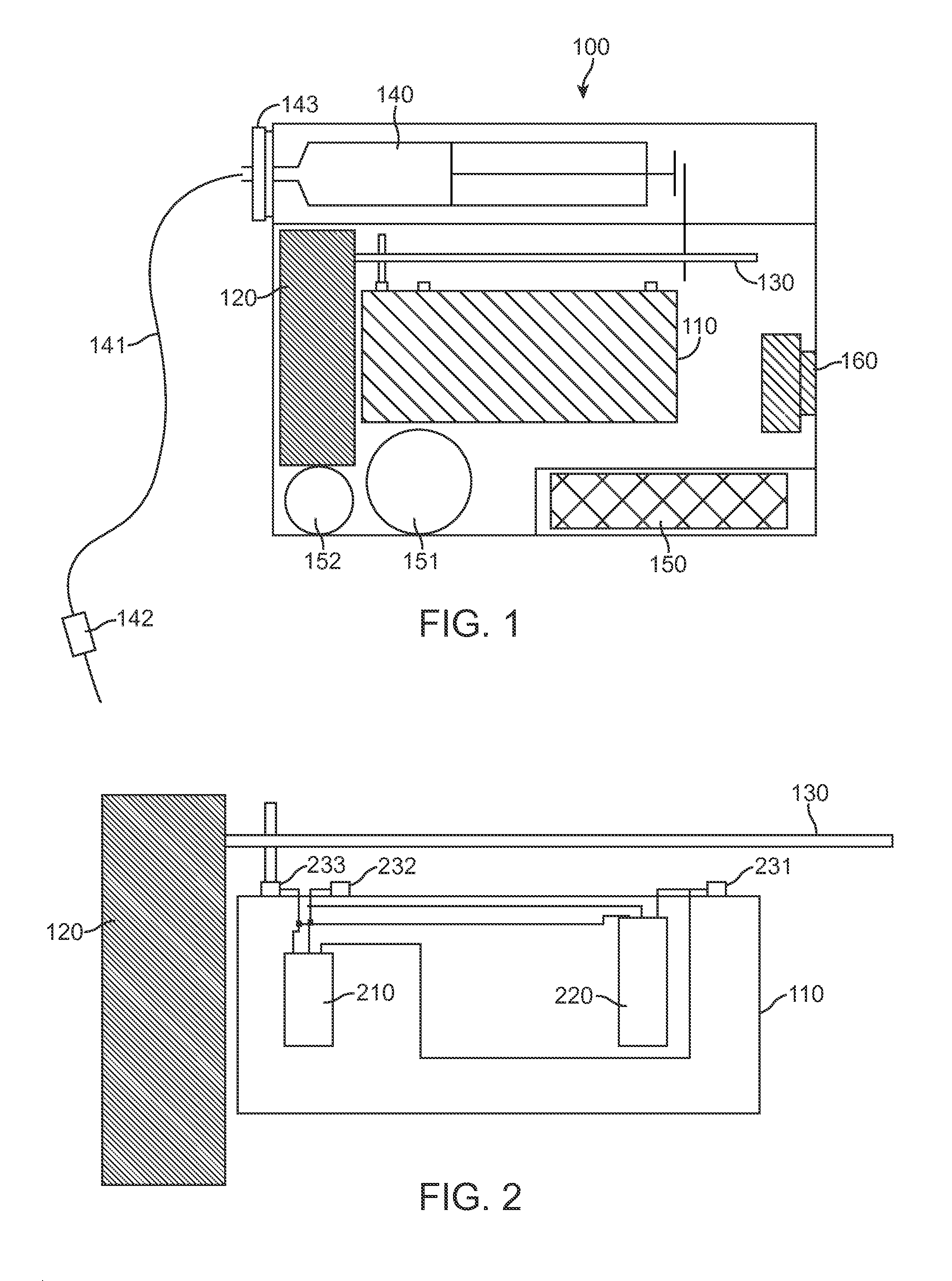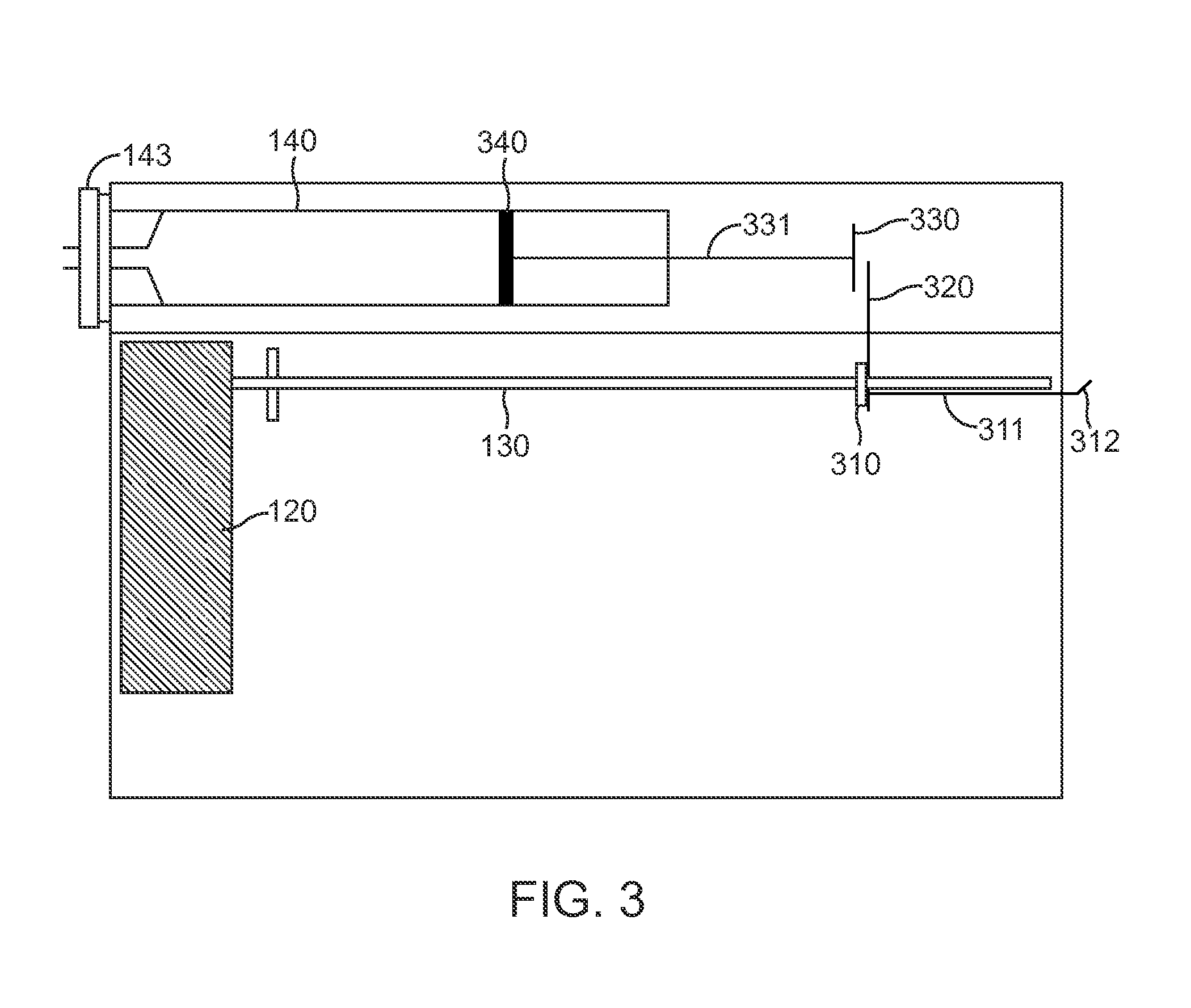Dual microcontroller-based liquid infusion system
a liquid infusion system and microcontroller technology, applied in the direction of suction devices, intravenous devices, other medical devices, etc., can solve the problems of time lag, limit the number of times the drug can be delivered, and the need for people to regulate their lifestyl
- Summary
- Abstract
- Description
- Claims
- Application Information
AI Technical Summary
Benefits of technology
Problems solved by technology
Method used
Image
Examples
Embodiment Construction
[0022]The invention is a dual microcontroller-driven subcutaneous liquid infusion system for use in biomedical applications. The infusion system (sometimes referred to as micro-inserter) of the present invention is shown schematically in FIG. 1. The system 100 consists of a dual microcontroller assembly 110 that controls operation of a micromotor 120 to drive a precision screw 130. The microcontrollers are nanowatt, CMOS devices with built-in CPU, clock, memory and user interface. Rotation of precision screw 130 causes the airtight liquid container 140 to discharge the drug through flexible delivery tube 141 and injector 142. A removable threaded cap nut 143 facilitates snug fitting of the liquid holder directly into the micro-inserter. The micromotor is driven by the main battery 150, while the microcontroller assembly is energized by lithium battery 151. Alarm conditions are signaled by a buzzer 152 and the microcontrollers can be connected to an external data source such as a com...
PUM
 Login to View More
Login to View More Abstract
Description
Claims
Application Information
 Login to View More
Login to View More - R&D
- Intellectual Property
- Life Sciences
- Materials
- Tech Scout
- Unparalleled Data Quality
- Higher Quality Content
- 60% Fewer Hallucinations
Browse by: Latest US Patents, China's latest patents, Technical Efficacy Thesaurus, Application Domain, Technology Topic, Popular Technical Reports.
© 2025 PatSnap. All rights reserved.Legal|Privacy policy|Modern Slavery Act Transparency Statement|Sitemap|About US| Contact US: help@patsnap.com



